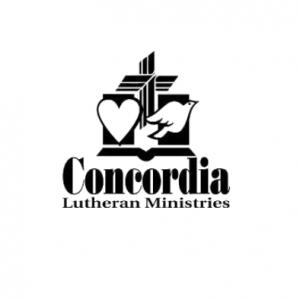Provide patient care services, including assessing and managing patients in the outpatient and/or inpatient environment, by following established standards and practices within the practice specific specialty.
Education:
Minimum: Master Degree in Nursing
Preferred: Doctor of Nursing Practice
Registration/Certification/Licensure:
Current PA RN and CRNP licenses, ACLS, and Act 33/73 clearances. Individual must meet the credentialing requirements of the Medical Staff Office.
Experience:
Minimum: None
Preferred: One year experience working as a CRNP and experience in Endocrinology.
Other Requirements: N/A
Status: Exempt
- The following frequency definitions apply to all Physical Requirements unless otherwise noted:
Occasional: (0-1/3 of day , 0 - 2.5 hrs/day, 1 - 4 reps/hr)
Frequent: (1/3 -2/3 of day , 2.5 - 5.5 hrs/day, 5 -24 reps/hr)
Constant: (> 2/3rd of day , > 5.5 hrs/day, > 24 reps/hr)
NOTE: An asterisk (*) indicates that the item is an essential function.
- Non-Material Handling
- Standing - Remaining on one's feet in an upright position remaining stationary - FREQUENT
- Walking - Remaining upright on one's feet, and moving about - FREQUENT
- Sitting* - Body remains in a seated position - FREQUENT
- Stooping - To bend the body downward and forward by bending the spine at the waist - OCCASIONAL
- Bending - To flex the upper body forward - OCCASIONAL
- Twisting - To rotate the upper body forward - OCCASIONAL
- Climbing - To move the body in any direction on equipment or structures that do not include stairs or ladders - N/A
- Ladders - To ascend and descend ladders - N/A
- Stairs - To ascend and descend stairs - OCCASIONAL
- Kneeling - To move the body downwards and come to rest on both hands and both knees - OCCASIONAL
- Squatting - To move the body downwards by bending both knees - OCCASIONAL
- Crouching - To bend the body forward and downward by bending the spine and the legs - OCCASIONAL
- Crawling - To move the body forward or backwards on hands and knees - N/A
- Reaching Horizontal - To extend the arms and hands outward, remaining under shoulder height - FREQUENT
- Reaching Overhead - To extend the arms and hands up and out over shoulder height - OCCASIONAL
- Grasping - Using functional gripping of the hand to handle an object - FREQUENT
- Finger Manipulation - To manipulate objects with the use of fingers - FREQUENT
- Seeing* - Using visual feedback to accomplish a task or activity - CONSTANT
- Hearing* - Using sound feedback to accomplish a task or activity - CONSTANT
- Repetitive Upper Extremity Use* - Using the arms and/or hands continuously or more than 2/3 of the total time - CONSTANT
- Repetitive Lower Extremity Use* - Using the legs and/or feet continuously or more than 2/3 of the total time - FREQUENT
- Pushing* - To exert a force upon an object in order to move it in a certain direction Pushing refers to moving an object away from the person
- Pulling* - To exert a force upon an object in order to move it in a certain direction Pulling refers to moving an object towards the person
- Lift - Shoulder to overhead
- Carrying - To transport an object or article using the arms or hands (> 10 feet)
- Working alone - OCCASIONAL
- Working in cramped quarters - N/A
- Constant interruptions - FREQUENT
- Working with hands in water - OCCASIONAL
- Use of power tools - OCCASIONAL
- Working on ladders/scaffolding - N/A
- Exposure to vibration - N/A
- Exposure to dust - OCCASIONAL
- Exposure to noise (constant) - N/A
- Exposure to electrical energy (outlets, etc) - OCCASIONAL
- Exposure to temperature changes (heat, cold, humidity), that require special clothing - N/A
- Exposure to slippery walking surfaces - OCCASIONAL
- Exposure to solvents, grease, oils - OCCASIONAL
- Exposure to radiant energy, ie computer terminal (more than 4 hours per shift) - OCCASIONAL
- Working with bloodborne pathogens - CONSTANT
- Cardiovascular Energy Requirements - Physical Demand
|
Physical Demand
|
Met Level
|
Examples of similar activity intensity
|
|
Sedentary to Light
|
0 - 3.5
|
Light house cleaning, washing dishes, serving food, food shopping, sitting, standing, computer work.
|
|
Medium
|
3.6 - 6.3
|
House work (mopping, scrubbing), health club exercising, treadmill work, stretching, yoga, walk/run-play with children, aerobic class, dancing, carrying bucket/wood, auto body repair, shoveling snow, golf (carrying clubs).
|
|
Heavy to Very Heavy
|
> 6.4
|
Calisthenics (push up, pull up, sit up, vigorous effort), carrying groceries upstairs, shoveling coal, bailing hay, fire fighting, sawing by hand, splitting wood.
|
- As relates to this position:
- Sedentary to Light - CONSTANT
- Heavy to Very Heavy - OCCASIONAL
|
I. Specific Job Responsibilities (Essential Functions):
|
- Manages day-to-day in and out patient care in conjunction with supervising physicians. Provides patient and or family with information regarding treatment or procedures, condition and expectation during illness or recovery.
- Provides patient education/counseling and instruction regarding common patient problems.
- Formulates differential diagnoses by priority considering multiple potential mechanisms causing complex acute, critical, and chronic illness states.
- Demonstrates effective verbal, nonverbal, and written communication skills, including documentation according to established standards while maintaining patient confidentiality.
- Displays commitment to expanding his/her knowledge base and views this as a continuous process to maintain professional and personal growth.
|
II. Organizational Responsibilities:
|
- Completed mandatory education, annual competencies and department specific education within established timeframes.
- Completed annual employee health requirements within established timeframes.
- Maintained license/certification, registration in good standing throughout fiscal year.
- Consistently utilizes appropriate universal precautions, protective equipment, and ergonomic techniques to protect patient and self. Identifies and works to reduce potentially unsafe patient care or other safety practices.
- Adheres to regulatory agency requirements, survey process and compliance.
- “Sets the Stage” by using greetings/introductions when interacting with any customer or entering a patient room. Looks and acts like a professional. Uses consistent phone etiquette. Helps people who look lost or confused. Keeps a clean and professional environment and work space. Clarifies expectations and creates positive handoffs and positive lasting impressions.
- Fosters a teamwork approach by respecting other members of the hospital team. Stays involved and informed of happenings within the organizations. Creates win-win situations by helping others. Works to resolve conflicts and concerns in a constructive way and asks for assistance in helpful ways.
- Is the Owner: Takes responsibility for problems, issues or opportunities for improvement by initiating constructive review of concern rather than negatively attacking an issue. Understands systems and processes and uses appropriate channels to address concerns when out of own span of control. Demonstrates compassion and works beyond “own assignment” by seeing “big picture”.
- Creates a Caring Environment by communicating in helpful ways. Always protects the confidentiality and dignity of patients and others. Listens with empathy and understanding and provides options and choices.
- Provides Great Explanations through user-friendly information and explanations (uses language others can understand). Makes sure people know what they can and cannot expect and checks for understanding and agreement.









